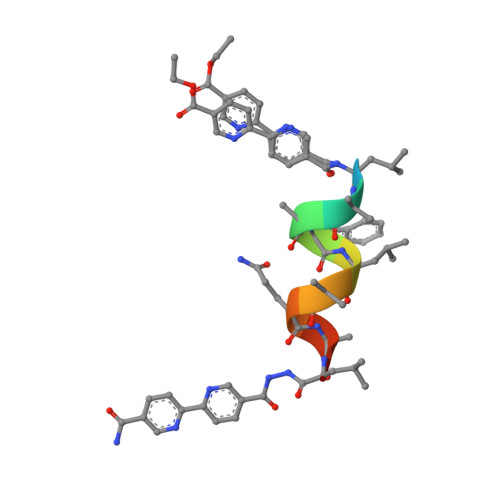Pore Restructuring of Peptide Frameworks by Mutations at Distal Packing Residues.
Heinz-Kunert, S.L., Pandya, A., Dang, V.T., Oktawiec, J., Nguyen, A.I.(2024) Biomacromolecules 25: 2016-2023
- PubMed: 38362872
- DOI: https://doi.org/10.1021/acs.biomac.3c01418
- Primary Citation of Related Structures:
8V56, 8V59, 8V5W, 8V5X, 8V5Z, 8V61 - PubMed Abstract:
Porous framework materials are highly useful for catalysis, adsorption, and separations. Though they are usually made from inorganic and organic building blocks, recently, folded peptides have been utilized for constructing frameworks, opening up an enormous structure-space for exploration. These peptides assemble in a metal-free fashion using π-stacking, H-bonding, dispersion forces, and the hydrophobic effect. Manipulation of pore-defining H-bonding residues is known to generate new topologies, but the impact of mutations in the hydrophobic packing region facing away from the pores is less obvious. To explore their effects, we synthesized variants of peptide frameworks with mutations in the hydrophobic packing positions and found by single-crystal X-ray crystallography (SC-XRD) that they induce significant changes to the framework pore structure. These structural changes are driven by a need to maximize van der Waals interactions of the nonpolar groups, which are achieved by various mechanisms including helix twisting, chain flipping, chain offsetting, and desymmetrization. Even subtle changes to the van der Waals interface, such as the introduction of a methyl group or isomeric replacement, result in significant pore restructuring. This study shows that the dispersion interactions upholding a peptide material are a rich area for structural engineering.
Organizational Affiliation:
Department of Chemistry, University of Illinois Chicago, Chicago, Illinois 60607, United States.















